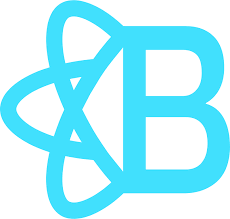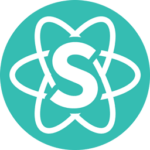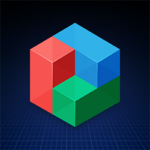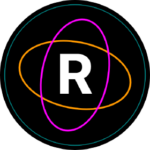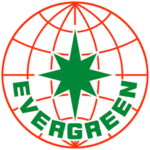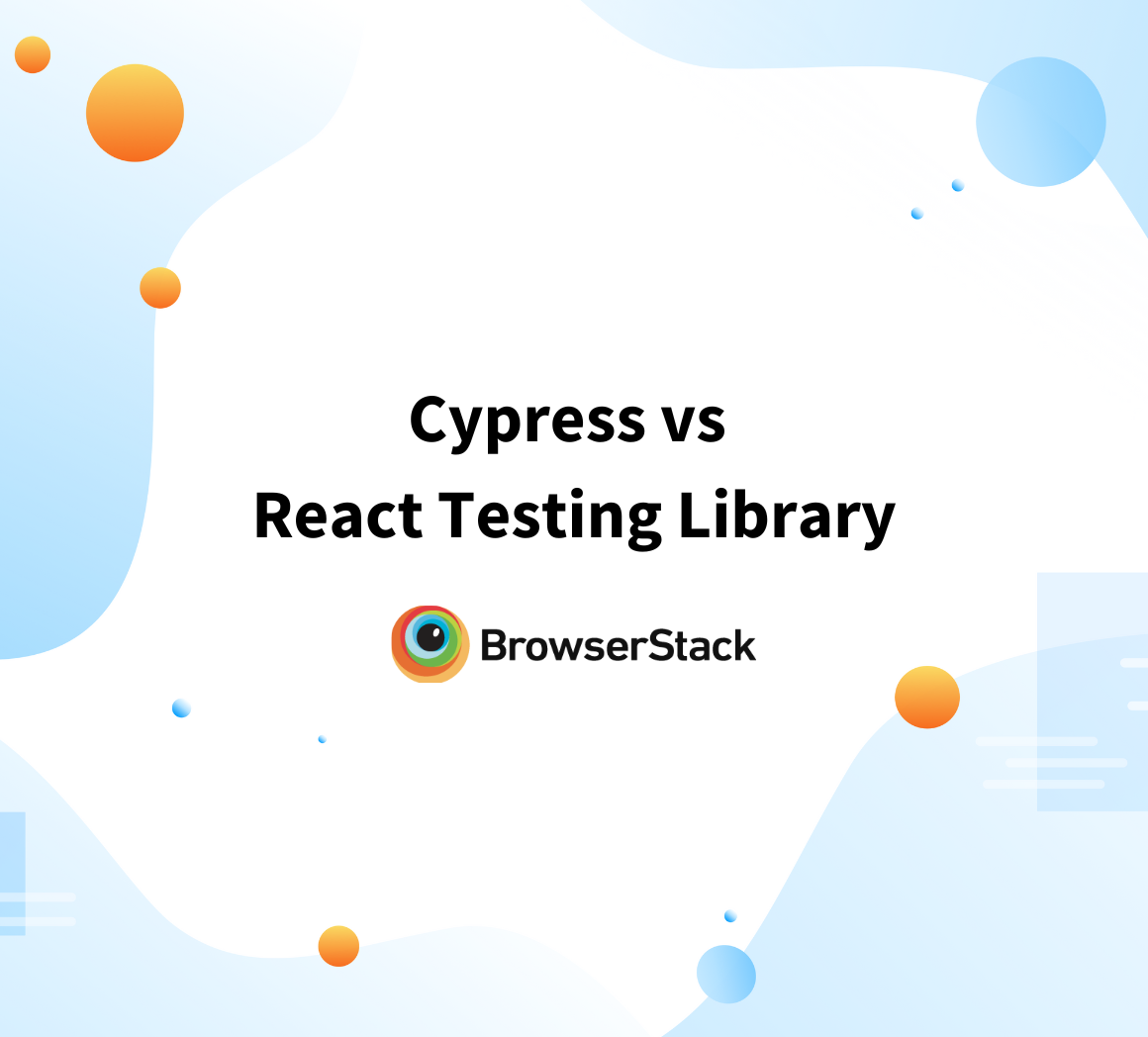React is a powerful JavaScript library that has changed the way we build user interfaces. One of its key strengths is creating reusable components, which makes development faster and more efficient. To make this process even easier, many developers use React component libraries.
Overview
What is a React Component Library?
A React Component Library is a collection of pre-built, reusable UI components that streamline the development of React applications.
Why is React Component Library used?
- Speeds up development by providing ready-to-use components.
- Ensures design consistency across the application.
- Simplifies complex UI creation with minimal effort.
Top 10 React Component Libraries
- Chakra UI
- Material-UI (MUI)
- Ant Design
- React Bootstrap
- Semantic UI React
- Blueprint.js
- React-strap
- Grommet
- Rebass
- Evergreen
This guide explores what React component libraries are, why they’re useful, and highlights the top libraries. Whether you’re building a simple website or a complex application, this guide will help you choose the right tools and use them effectively.
What is React Component Library?
A React component library is a collection of pre-built UI components like buttons, forms and models specifically designed to integrate smoothly with React applications. These libraries provide the essential building blocks needed to create interfaces, saving developers the effort of building components from scratch.
What sets these libraries apart is their focus on customization & modern design principles. Developers can tweak the look and feel of components to align with their brand while ensuring functionality and consistency. They are especially useful for creating polished, responsive, and user-friendly interfaces.
Read More: Angular vs React vs Vue: Core Differences
Why use React Component Libraries?
React component libraries are valuable for developers seeking to work faster without compromising quality. They offer pre-built, reusable components, removing the need to build common UI elements from scratch. Along with saving time, they help maintain a consistent design throughout the application.
Many libraries also prioritize responsiveness and accessibility, making it easier to create applications that look great on all devices and meet accessibility standards.
If you’re new to testing React apps, check out this React Testing Tutorial for a practical guide on ensuring your app performs flawlessly.
Top 10 React Component Libraries in 2025
Stay ahead in your development game with these top 10 React component libraries, designed to simplify UI creation and boost productivity.
1. Chakra UI
Chakra UI is a React component library designed for accessibility, simplicity and flexibility. It offers a modular, themeable design system that helps developers quickly create consistent and accessible user interfaces. With seamless integration into modern workflows, it’s an excellent choice for small to medium-sized projects.
Key Features:
- Fully accessible, WCAG-compliant components.
- Built-in dark and light mode support.
- Utility-first styling with intuitive props.
- Seamless integration with Emotion and Styled Components for extended styling options.
Pros:
- Lightweight and easy to use.
- Outstanding documentation and an active community.
- Simplifies custom theming with a flexible design system.
Cons:
- Component library might lack advanced features for niche use cases.
- Not tailored for high-complexity enterprise-scale applications.
Read More: Top Testing Libraries for React
2. Material-UI (MUI)
MUI is a robust React library that implements Google’s Material Design principles. It offers an extensive set of highly customizable components suitable for projects ranging from small-scale applications to enterprise-level solutions.
It provides tools that cater to both new & experienced developers, ensuring consistent & aesthetically pleasing designs.
Key Features:
- Comprehensive Material Design Component Library.
- Customizable Theming options to create unique designs.
- Responsive grid system with flexible layouts for building mobile-friendly UIs.
- Supports Server Side Rendering (SSR) support for optimized performance.
Pros:
- Rich ecosystem & active community support.
- Regular updates with new features.
- Highly scalable for large & complex applications.
Cons:
- Initial setup can be overwhelming for new developers.
- May increase app size due to its extensive feature set.
Read More: Cypress vs React Testing Library
3. Ant Design
Ant Design is a powerful React component library designed for building enterprise-level applications. It focuses on design consistency and provides clear guidelines and patterns for creating professional UIs.
With a wide range of components and tools it makes developing complex interfaces easier while ensuring a clean & unified appearance.
Key Features:
- A vast suite of components with robust functionality.
- Integrated design guidelines & patterns for consistency.
- Internationalization support for global applications.
- Built-in form validation & advanced input controls.
Pros:
- Excellent choice for complex & enterprise-grade projects.
- Detailed documentation & practical examples.
- Strong data visualization tools for dashboard applications.
Cons:
- Dependency heavy, potentially increasing build complexity.
- Some components may require additional configuration to meet specific requirements.
4. React Bootstrap
React Bootstrap brings the popular Bootstrap framework into the React ecosystem, providing pre-styled, responsive components that simplify UI development.
It bridges the gap between traditional web development & React-based projects, ensuring a smooth transition for developers familiar with Bootstrap.
Key Features:
- Complete integration with Bootstrap styles & utilities.
- Responsive grid system for fluid layouts.
- Customizable with Bootstrap themes.
- Server-side rendering support.
Pros:
- Ideal for developers already familiar with Bootstrap.
- Lightweight and very well-documented.
- Excellent cross browser compatibility.
Cons:
- Lacks modern styling flexibility offered by newer libraries.
- Tied to Bootstrap’s design philosophy, limiting unique customizations.
Read More: How to Debug react Code: Tools and Tips
5. Semantic UI React
Semantic UI React focuses on simplicity and readability, offering intuitive components that prioritize semantic HTML and straightforward theming.
It aims to provide a human-friendly syntax that speaks with developers, making it easier to create clean and accessible UIs. Its declarative approach and intuitive design make it an excellent choice for beginners & small-scale projects.
Key Features:
- Human-readable component names for better readability.
- Simple and configurable theming options.
- Wide range of pre-built UI elements and behaviors.
- Declarative API for clean and maintainable code.
Pros:
- Beginner-friendly and intuitive.
- Emphasizes clean and semantic HTML structure.
- Lightweight and easy to set up.
Cons:
- Lacks depth in features for enterprise-grade applications.
- Relatively smaller ecosystem and slower development pace.
Read More: Guide to UI Performance Testing
6. Blueprint.js
Blueprint.js is designed for creating data-intensive applications like dashboards & analytics tools. It offers a set of robust components optimized for complex and professional interfaces.
With excellent support for handling large datasets & detailed user interactions, it’s a top choice for data-driven applications.
Key Features:
- Specialized components for data visualization & management.
- Comprehensive documentation with built-in TypeScript support.
- Accessible components with ARIA attributes to ensure accessibility for all users.
- Themeable with CSS & Sass for advanced customization.
Pros:
- Ideal for data-heavy & professional applications.
- Strong TypeScript integration.
- Detailed API documentation.
Cons:
- High learning curve due to its advanced features.
- Best suited for niche use cases, limiting broader adoption.
7. React-strap
React-strap offers easy-to-use React components based on Bootstrap 4, providing lightweight & modular tools for creating responsive interfaces.
It combines Bootstrap’s simplicity with React’s component-based structure, making it perfect for developers seeking quick results without complex configurations.
Key Features:
- Compatible with Bootstrap 4 utilities and styles.
- Easy-to-use API for rapid prototyping.
- Modular and responsive design components.
- Customizable using Bootstrap classes.
Pros:
- Lightweight and beginner-friendly.
- Efficient for small-scale projects.
- Easy setup with minimal dependencies.
Cons:
- Limited scalability for large, dynamic applications.
- Few customization options compared to modern libraries.
8. Grommet
Grommet is a modern React UI library designed for accessibility, theming and unique designs. It’s ideal for creating visually appealing, responsive applications.
With powerful customization options, it helps developers build tailored UIs while maintaining accessibility, making it perfect for design-focused projects.
Key Features:
- Built-in accessibility & responsive design.
- Advanced theming & customization options to match project needs.
- Modular and reusable components for consistent UIs.
- Rich set of layouts & controls for design flexibility.
Pros:
- Excellent for creating accessible & modern designs.
- Lightweight & visually clean.
- Easily customizable with intuitive configuration.
Cons:
- Limited adoption may result in fewer third-party plugins or resources.
- It requires more manual effort for enterprise-level complexity.
9. Rebass
Rebass is a minimalist library of stateless functional components designed as a foundation for themeable UI systems.
It’s ideal for developers looking to build lightweight and custom UIs. With a focus on simplicity, Rebass provides a flexible toolkit for creating visually consistent designs with minimal effort. It’s a great fit for projects that value speed and performance.
Key Features:
- Minimalist approach focusing on flexibility.
- Easily themeable with Theme UI.
- No dependencies on additional CSS frameworks.
- Lightweight with fast performance.
Pros:
- Simplifies custom styling for small projects.
- Lightweight and fast-loading.
- Ideal for highly customized and unique designs.
Cons:
- May not meet requirements for complex application development.
- Lacks a diverse set of pre-built components.
10. Evergreen
Evergreen is a React UI framework designed by Segment to build flexible and enterprise-ready design systems.
It prioritizes simplicity, consistency, and professional-grade components. Its pre-built components and design system cater to the needs of large-scale applications, ensuring scalability & maintainability.
Key Features:
- Pre-built, flexible components for professional interfaces.
- Strong emphasis on design consistency and composability.
- Built-in TypeScript support for robust development.
- Easily customizable & extendable design system.
Pros:
- Perfect for creating scalable & enterprise grade applications.
- Strong default styling out of the box.
- Supports large-scale, flexible design systems.
Cons:
- Dependency-heavy architecture may increase development time.
- Advanced features might require deeper familiarity with its ecosystem.
Read More: Implementing Lazy Load in React
A Quick Comparison of the Top React Component Libraries
Here is a comparison between the top React Component Libraries:
| Library/Feature | Component Coverage | Performance | Built-in Theming | Accessibility Features | Community Support |
|---|---|---|---|---|---|
| Chakra UI | Moderate | Lightweight | Excellent | WCAG Compliant | Active and Growing |
| MUI | Extensive | Relatively Larger Bundle | Advanced | Moderate | Large and Active |
| Ant Design | Extensive | Larger Bundle | Integrated | Moderate | Large and Active |
| React Bootstrap | Moderate | Lightweight | Limited to Bootstrap Themes | Inherited from Bootstrap | Established |
| Semnatic UI React | Moderate | Lightweight | Simple and Flexible | Moderate | Smaller Community |
| Blueprint.js | Extensive | Larger Bundle | CSS and Sass Based | Built-in | Moderate |
| React – strap | Basic | Lightweight | Limited | Inherited from Bootstrap | Moderate |
| Grommet | Moderate | Lightweight | Highly Customizable | Excellent | Smaller Community |
| Rebass | Minimal | Fast | Minimal | Limited | Smaller Community |
| Evergreen | Moderate | Moderate | Strong and Extendable | Strong | Moderate |
What makes a Great React Component Library?
A great React component library helps developers create consistent, maintainable, and scalable user interfaces with reusable, customizable components.
Here’s what makes a React component library great:
- Reusable Components: Components should be flexible and easy to use across different parts of an app without needing to be rewritten.
- Customizable & Themeable: Components should allow easy customization through props, including styling and theme options, to fit the app’s design.
- Accessibility: Components should follow accessibility standards, ensuring they work well with screen readers & keyboard navigation.
- Consistent Design: The library should follow a clear design system to ensure the app’s UI is uniform in terms of colors, spacing, typography and behavior.
- Good Documentation: Clear and easy-to-understand documentation is essential. It should include usage examples, API details, and guides on customization.
- Responsive Design: Components should work well on all screen sizes, automatically adjusting for mobile and tablet devices.
- Performance: Components should be lightweight and optimized to minimize performance issues like unnecessary re-renders.
- Tested Components: The library should ensure that the components are reliable and work as expected, reducing the chances of bugs.
- Easy Integration: It should be simple to add the library to any React project without major changes to the existing code.
- Active Community: A great library has an active community offering support & regular updates to keep it compatible with the latest React versions.
Best Practices for Using React Component Libraries
Here are some best practices for using React component libraries:
- Choose the Right Library: Select a component library that fits your project’s needs, design guidelines and technical requirements. Consider factors like customization options, performance and community support.
- Follow the Documentation: Always read and follow the library’s documentation. It will help you understand how to use the components properly and avoid common mistakes.
- Use existing components as Building Blocks: Use the library’s components as building blocks rather than trying to build everything from scratch. Take advantage of the existing functionality and customize them whenever necessary.
- Customize Responsibly: Customize components to fit your app’s design but avoid over-customizing as this can lead to inconsistent UI when updating the library in the future.
- Keep It Simple: Start with simple components and add complexity only when needed. This will help avoid unnecessary bloat & keep your app lightweight.
- Use Proper Styling: Use the recommended styling approach for the library in use(like external CSS). Make sure your custom styles align with the library’s design system to maintain consistency.
- Stay Updated: Regularly check for library updates & keep it up to date. New versions may include performance improvements, new features or bug fixes.
- Test Components: Always test how the library components behave in your app. Write tests for your own code that interacts with the components.
- Avoid loading multiple Libraries: Don’t load multiple libraries for the same purpose. For instance, if your component library already has a date picker, do not add a second one from another library.
- Keep Performance in Mind: Be mindful of the performance impact of using too many components, especially if they require large bundles. Optimize where necessary, like lazy loading or tree shaking unused components.
Why Test React Components on Real Devices?
Testing React components on real devices is important to ensure they perform well for actual users. Here’s why:
- Real World Experience: Real devices give you an accurate picture of how your app behaves, from screen sizes to touch interactions, providing a better user experience.
- Catch Device Specific Issues: Some bugs only appear on certain devices or browsers. Testing on real devices helps you catch these issues early.
- Cross Browser Compatibility: Real devices show how your app looks & works on different browsers, helping you ensure consistency across platforms.
- True Performance Insights: Testing on actual devices helps you measure performance like battery usage, memory, and load times in real-world conditions.
Irrespective of the React testing library chosen, it is essential to test under real user conditions. BrowserStack Automate makes React website testing easy by letting you run automated tests on 3500+ real devices & browsers. It gives you access to a wide range of devices without needing to manage any physical ones, saving time and increasing test coverage.
Conclusion
React component libraries are invaluable tools for modern web development, enabling developers to build consistent, responsive & accessible UIs with ease. By carefully choosing the right library and adhering to best practices, developers can save time, enhance productivity, and deliver visually engaging and highly functional applications.
A well-integrated library and a testing tool like BrowserStack accelerate development and ensure a seamless user experience across devices and platforms.





